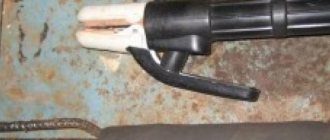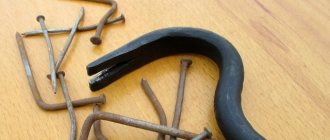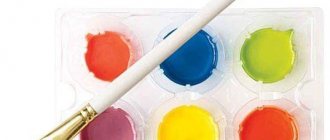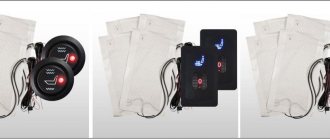Bad weather, when it snows or rains outside, is often accompanied by fogging of windows and mirrors and the formation of ice on them. Snow sticks, water partially freezes, which negatively affects the driver’s visibility.
And you need to constantly and very carefully monitor the road situation. The driver needs to watch not only what is happening in front of him, but also be aware of what is happening behind him.
For many, heated mirrors may seem like a practically useless solution. Others believe that they cannot do without it.
If the car owner is unlucky and does not have standard heating, you can always install the system yourself.
Why do you need heated mirrors?
Before installing an effective heated mirror on your car, it is worth talking about its necessity and benefits.
There are several reasons why car companies install these systems on many cars from the factory, and owners of old cars decide to install them on their own:
- Safety. This is the main aspect and the main reason. Heating provides a better view of what is happening behind, since the driver constantly uses the internal and external rear-view mirrors while driving. And if heating is not needed inside, then outside it is a necessity.
- Comfort. The driver will not have to be distracted by lowering the side window and wiping the mirror. Heating will independently remove water and dry out excess moisture.
- Anti-fog protection. During humid weather, condensation may actively form on the exterior mirrors. It blocks normal visibility.
Heating is needed to improve traffic safety and provide good visibility.
Alas, many older machines do not have this function from the factory. But there is a way out of the situation. This is a DIY system installation.
Benefits of heating
The main side mirrors contain a single element in a protective housing that is customizable to the driver. Some car manufacturers provide additional features to make them easier to use. One such feature is adding a heat source to the side reflectors. This is an ideal option for those drivers who live in cold regions and for those who do not have a garage to accommodate their vehicle during snowy weather. The heated element increases the temperature, melting snow, moisture, and condensation. This means that the driver does not have to waste time cleaning components and improving visibility.
On vehicles that have heated side mirrors as standard equipment, most have a separate heated button for the driver's side. If there is no such control panel, the driver turns the part every time he turns the car mirror heater.
Types of heating systems
There are several types of systems that are installed on exterior mirrors. Each of them has its own characteristics.
The first versions of such units were extremely simple. An ordinary incandescent lamp was mounted inside the mirror. It turned on, heating occurred from the inside, which made it possible to melt the ice and partially dry the surface.
The modern heating method has changed, but the principle of organizing the system and its functions have not changed.
There are 3 types of exterior mirror heaters:
- Wire. Wire-based heating is quite common in cars. The heating element here is a tungsten filament. It is laid on a layer of insulation with heat-resistant characteristics. Current from the on-board network passes through the threads, which provokes heating and removal of ice.
- Printed conductors. Cars are equipped with printed circuit conductor systems, which are considered the most modern. You can easily buy such boards and install them yourself. You won't be able to make them yourself.
- Film. A special film heater has a corresponding base, inside of which there are heating elements.
Separately, it is worth highlighting lamp defrosters. This is a fairly outdated technology, but easy to implement. Mainly used by owners of old domestic cars. With minimal investment you can get good heating. It is enough to install and connect a small incandescent lamp of approximately 10 Watts into the mirror body.
Selecting a heating element
Of course, for the most part, the heating elements that are installed inside the side mirrors are the same. However, there are differences in the shape and size of the element itself, so if you yourself cannot say with confidence that this particular element will suit you, it is better to consult the seller, since most often heaters are made for specific car models or for entire lines of cars with mirrors of the same size and shape.
If there is no opportunity to consult, then it is better to buy a heating element slightly smaller in size than the mirror surface itself. In this case, you will protect yourself from an unpleasant situation when you have to trim the heater body, which is fraught with depressurization and burnout of the element during operation.
Also, when purchasing, make sure that the voltage and current indicated on the heating element are suitable for powering from your car battery.
How to install a ready-made kit
Not all motorists know how to install heated mirrors themselves, without having anything at their disposal. Not everyone can assemble a unit from scratch. But for such situations there are ready-made kits. All that remains is to install them correctly, following the instructions.
To organize heating for the side mirrors of a car with your own hands, you usually need to perform the following steps:
- remove the mirror assembly from the car;
- if the body elements are glued together, they can be heated with a hairdryer or filled with hot water;
- bolted connections are simply unscrewed with a suitable tool;
- the part is thoroughly cleaned and dried;
- the internal dimensions of the housing and the heater are compared;
- film heaters can be cut according to special marks;
- wire systems are laid according to the size of the internal space;
- the board will have to be selected to match the dimensions of the rear view mirror housing;
- the board is glued from the inside with heat-resistant glue;
- the films are fixed on the wrong side;
- Wires should be soldered to the contact thermoelements and brought out to the power source.
At this point, the installation of heated mirrors is almost complete. It is not difficult to do it yourself. But it is also important to connect the system for power supply from the mains.
Most often, the connection is made to the line that supplies power to the heated rear window. Some output a separate wire, connect a relay and its own fuse.
It's worth taking a look at the instruction manual. Many cars are equipped with heating from the factory, but it is installed only on expensive trim levels.
This allows, with more modest equipment, to use the factory connection circuits for a standard defroster by connecting a heating element purchased separately.
Electrical circuits and wiring arrangements are different on all machines. Therefore, there cannot be universal connection instructions.
Another option would be to connect a defrosting system assembled from scratch.
Progress
All work can be divided into 2 stages:
- assembly;
- installation.
Assembly
The heating element assembly is formed by the new contents of the switch block, which is shown in the mirror heating diagram.
Removing the door card.
To remove the door card, unscrew all the screws at the end of the card, in the handle and the screws securing the speakers. After that, remove the handle and unscrew the screws hidden behind it. Next, from the mirror side, start removing the card.
Removing a mirror.
Remove the side mirrors in the folded position. To do this, you need to unscrew the screws that secure it to the door.
Disconnect the wires. Next, detach the mirror element by pulling its bottom part. The mirror itself is attached to a plastic frame, which needs to be removed using a hairdryer.
After this, the heating element must be attached to the plastic and the corresponding holes for the contacts must be cut. Next, remove the protective layer and glue the heating element to the mirror, and then to the plastic.
First you need to pull the wires through the side mirror housing, crimping and connecting the contacts. After this, you need to install the mirror element in place. Next, we install the structure on our turntable.
Heated side mirrors are ideal for drivers who live in cold climates and who often have to spend time scraping ice or removing moisture from the glass. Heating coils automatically clean the surface so drivers can see the rear of the road clearly. Since the price of ready-made heated side mirrors is quite high, many craftsmen install the heating themselves. Having the necessary tools, you can do this yourself at home. Have you already installed heated rear view mirrors?
Homemade heater
You need to do this kind of heating of mirrors with your own hands if you have certain skills and knowledge. Although assembling the heating system is not the most difficult.
Before you make a homemade heated car exterior mirror with your own hands, choose the appropriate type. Usually this is a simple incandescent lamp, or wire heaters.
Decide on the choice of system in advance, as this directly affects what materials and tools may be needed.
The lamp heating kit consists of:
- 10 Watt incandescent lamps;
- foil;
- wires;
- soldering iron;
- sealant;
- cartridge;
- heat-resistant material;
- assembly tools.
You can also assemble a heated rear view mirror in a car yourself using a wire system.
Here you will need:
- heat-resistant base;
- set of tungsten filaments;
- soldering iron;
- heat-resistant sealant;
- wires;
- Double-sided tape.
Which option is the most correct, everyone decides for themselves individually.
Having prepared everything you need, get to work. Here the procedure will be something like this:
- prepare the mirror for installation of equipment by removing and disassembling it;
- rinse and dry the body;
- lay a layer of heat-resistant material on the inside;
- line the top with aluminum foil of sufficient density (not ordinary food foil);
- if it is a lamp defroster, the cartridge must be installed so that after assembling the housing it does not come into contact with other structural elements;
- a light bulb is screwed into the socket;
- wires are soldered to the contacts with a soldering iron;
- insulation is performed using sealant and electrical tape;
- sealant seals the openings for wiring to power supplies;
- heating threads should be glued to the base;
- a layer of heat-resistant material is laid on both sides;
- Having received the heating structure, it must be glued inside the mirror body;
- contacts are connected to wires by soldering;
- the wiring is routed out through an existing or additionally made hole;
- All components are carefully insulated.
Preparing for work
At its core, heated side mirrors consist of any electric heater (low temperature), electrical wiring, and a control button (panel). The electrical circuit for heating the mirrors is connected to the vehicle's on-board 12-volt network. When the contacts of the power button are closed, the heating of the mirrors (heating element) is connected, the current heats the surface of the mirror, it heats up, and the resulting ice begins to melt, and the mirror also stops fogging up.
To design heated mirrors with your own hands, you need to select suitable materials and tools.
What is needed for work:
- heating elements for each mirror;
- hot water, hair dryer for heating the surface;
- scissors or a knife for cutting the heater according to the shape and dimensions of the mirror itself;
- drill with an attachment for making holes;
- to connect the system you will need wiring, bolt terminals, electrical tape;
- a button that allows you to start the device;
- fuse, relay.
When thinking about how to make heated mirrors with your own hands, you should start by dismantling the existing mirror.
Each driver can remove it himself:
The adjustment moves downwards, which allows you to pry off the structure with plastic protection. If you need to remove the system assembly, unscrew the fastening screws located under the casing. Next, you need to disconnect the mirror element itself. Under the influence of high temperatures, the adhesive base will become softer, making it possible to pry off the protection without damaging the device. If the glass is covered with paper tape, remove it. This procedure is not carried out on all machines, but extreme care is required, as it is easy to damage the coating. Using a universal heating element, you need to give it the required shape. And, applying it to the plastic part, determine the location of the holes for subsequent connection. Sometimes the plastic has to be cut and additional holes made to route the wires. Then the heating element itself is glued to the degreased surface. To do this, the protection is removed and the film is applied to the mirror. Having removed the top protective layer, we apply the plastic part
It is important here to prevent the formation of air bubbles. Having glued the heater to one side element, we proceed to the other, after which we insert the structure into the body and proceed to connecting wires and contacts.
Connection is an important stage that determines the effectiveness of the entire heating system. When thinking about how to connect heated mirrors, it is worth exploring two options. It can be connected to the glass heating or a button or a separate circuit is used. The latter option is better, as it reduces the load on the on-board network, since simultaneous heating of glass and mirrors is not always required.
Let's get started:
- It is better to remove the door trim and sills in advance.
- The wiring must be laid down along the door so that it does not interfere with the operation of the glass. The wires can be secured with electrical tape to other wiring.
- Next, we pull the wires through the corrugation. They enter the interior through a hole located below the hinges.
- For subsequent connection, the screws are unscrewed and the console is disassembled.
- The wiring from the mirrors is laid under the carpet.
- The bolt terminal is screwed to the negative wire and installed on a metal frame. The processes are similar for the left and right mirrors. During operation, some wires may be extended.
- Plus throws on the button. Subsequent connection of wires is carried out according to the standard scheme. Different connection schemes can be used. There are options where the plus is taken from the ignition relay or from the cigarette lighter.
Read more: Replacing the Lada Kalina oil pressure sensor, where is it located and why does the DDM light come on?
If you plan to connect the heated mirrors to the heated rear window system, less manipulation is required. In this case, the positive wires are connected, and the negative wire is output to the housing. Then a separate button is not required, the systems are turned on simultaneously.
Procedure
Now you can begin installing the heater. First, remove the holder with the mirror from the case. On most cars, it is enough to pry it with a screwdriver or something flat from below and pull it towards you.
Based on the characteristics of the holder, we choose the method of fastening the wire. If the inner surface of the holder is smooth (as in the photo), then stick double-sided tape on it.
Then we lay a piece of wire on this surface. This can be done arbitrarily, for example, in a zigzag or something else. The main thing is to place it so that the thread covers as much of the surface of the holder as possible. In this case, the wire should not intersect anywhere. Scotch tape will hold the nichrome thread well.
In this way, we fasten the wire along the accessible surface of the holder without touching the fasteners.
When laying the wire, its ends should be placed towards the side of the holder that is closer to the door, and so that they do not touch each other. To these ends we solder terminals for connecting to the wiring or simply the ends of prepared wires. Then the resulting connections need to be insulated.
All that remains is to provide insulation. If the wire was secured with tape, then to insulate it you can simply stick several more layers of regular adhesive tape on top. This will provide thermal insulation and prevent the wire from peeling off and shorting.
As for the holder where the wire is secured with a soldering iron, you can simply fill the entire surface where the thread passes with sealant and wait until it dries. In this case, the fastening elements will not be affected, which will ensure ease of fastening, and the wire itself will be insulated.
Read more: UAZ Patriot, Bukhanka and Hunter air conditioning does not work: installation, malfunctions and system diagram
Before installing the holder in place, we pull the wiring through the mirror body into the door, the wiring for powering the heaters. Only after this we assemble the mirror.
Checking the presence of standard heating
The presence of a heated rear view mirror cannot always be detected at first glance. The fact is that there is often no separate button to turn it on, and many car owners wonder how the heated exterior mirrors are turned on. The function is activated automatically when the rear window heating is turned on. To check if the mirror heater is present:
- Start the engine;
- Turn on the rear window heating;
- Spray the mirrors with water or blow on them;
- Touch it with your hand.
When the heating is running, the water drops dry within 1-2 minutes; when you breathe, the mirror does not fog up, and it is warm to the touch. In the cold season, you can verify the presence of heating by simply observing how long it takes for the mirror to thaw after being parked overnight. If a heating element is located underneath, the defrosting process takes only a few minutes.
Article on the topic: Car tuning: vinyl stickers
Types of heating
There are several main types of heating for these parts.
It can be carried out:
- wire that serves as a heating element;
- with an element made of printed conductors;
- with a film type heating element.
Wire based
Tungsten wire heater
The easiest way to make your own heated mirrors is to use wire. It is either wound onto the base or pressed on both sides with insulating material.
Attaching to the reflector on the reverse side is carried out either with adhesive tape, glue, or a mechanical clamp. The inevitable air gaps in this design, as well as the intermediate layers separating the heater from the reflector, significantly reduce the efficiency of the system. Such a mirror can be heated and illuminated if you install a light bulb.
From printed conductors
Printed conductor
In this case, the heating element is a flat layer created by screen printing from conductive pastes. The printed conductors themselves are located between layers of heat-resistant polymer. Using glue or adhesive tape, this heater is simply fixed behind the reflector, after which the mirror is inserted into the housing.
Another option is insulating tape on which printed conductors are formed. The disadvantage of this system is, as with the first, the presence of an intermediate layer between the heating material and the mirror itself. Therefore, the right electric mirror with heating from printed conductors can warm up slowly.
Film heater
This system is the most reliable and efficient. It is a universal heater, which is created from a conductive layer, fixed to the reflector with double-sided adhesive tape. Switching on is done with a separate button, which is very convenient, or a button can be used to heat the rear-view mirrors.
A few important details
To disassemble the mirrors, you will need screwdrivers of different sizes, as well as hex keys. You will need to find a place in the car to set the heating to turn on and off.
To disassemble the side window, first loosen the mounting screws. Use a hair dryer to soften the mirror elements. If this tool is not available, the driver can use hot water. The mirror must be completely placed in water, after which the analysis will be much easier.
To get the maximum effect from the heating operation, the elements must be prepared so that the contacts do not touch the coating. Contact between heat and coating results in burnout. All work can be done independently. However, it is better to contact a specialist, he will help with installation and perform the correct installation, so that unforeseen situations do not arise during the operation of the mirror heaters.
Installation and assembly must be performed sequentially. Each stage is performed one after another (certain actions cannot be skipped). Thus, heated mirrors will bring the driver the necessary comfort. In wet weather and frost, the mirrors will always be clean and dry.
Active stage of work execution
Often you have to face the fact that there is not enough space to place the appropriate socket under the lamp. In this case, there are only two options. One of them is to take a smaller light bulb, which is not recommended, the second is to use a heat-resistant clamp, which takes up virtually no space. Don't forget to solder the wires and carefully insulate this area. In any case, the most important thing is to prevent the lamp from touching the back of the mirror. This can lead to both damage to the latter and destruction of the heating element during movement.
Next, you should connect the heated mirrors to the vehicle's electrical network, for which you will need a pair of wires with a dense and flexible sheath
At this stage it is extremely important to ensure free adjustment of the mirror. To do this, you need to lay the wires correctly
They should not be stretched, nor should they bend in some areas.
Trailers Trailer: official website, price, reviews, photos
It is better to take such products as a kit, as is the case with Defogger DC12.
With your permission, I will not consider installing wire heaters. It is based on tungsten filaments, which provide high temperatures and require an extremely careful approach to organizing heating. There are too many risks when trying to assemble it yourself.
Films
Control
Now a word about heating control. The simplest and most common way is to connect the heaters to the heated rear window switch. This is very convenient and does not require the inclusion of many additional elements in the circuit. The only thing you may need is a relay and a fuse.
On expensive cars, the heated mirrors can be controlled automatically using sensors. In some cars, the side mirrors also include temperature sensors in their design; in others, they are controlled by a rain sensor.
Matching block
A few more words should be said about the coordination unit - it may be needed if your car is equipped with an on-board computer. The fact is that connecting directly can cause various problems in the car's electrical network. The system sees that electricity consumption does not occur as specified in the program - as a result, an emergency shutdown is triggered.
The matching block allows you to eliminate a number of important problems:
- failures in the on-board computer;
- power surges;
- overload;
- emergency shutdowns.
If you don’t feel like you have the talents of an electronics engineer, that’s okay - the industry offers a wide selection of smart connections for any car model. Finding and purchasing a device for the Kia Rio 3 will not be difficult - with it the electrical equipment will work like a clock.
Method 1
To install heated rearview mirrors, you will need some wire, two 12-volt light bulbs, some tools and some free time. In this case, the light bulbs are not intended to illuminate, but to serve as heating elements inside the housings. The heat generated by the bulbs is enough to warm up frozen or foggy mirrors in a matter of minutes.
Installation process for heated mirrors
You can disassemble the mirror using a screwdriver
To make heated mirrors yourself, you must first remove and disassemble them. In order to ensure better heat retention inside the mirror, the front wall should be insulated from the inside using heat-resistant material. The following materials can serve as insulation:
- electrical cardboard;
- varnished fabric in several layers;
- paronitis:
- textolite;
- getinaks.
Any of the selected insulation materials will also act as an insulating material if the “+” of the light bulb comes into contact with the mirror body. Of course, such insulating properties of these materials are relevant for mirrors with metal bodies. In plastic products, such a layer will protect the body from contact of a hot light bulb with it, which can cause it to melt. Foil should be glued over the thermal insulation, since it has the ability to reflect heat. In this case, the foil layer will be able to reflect heat from the light bulb directly to the back side of the mirror element.
Heating the mirror using a light bulb and a heat screen
If there is not enough space inside the mirror housing to place the socket corresponding to the light bulb, you can use a heat-resistant clamp to fix the light bulb. Also, the wires suitable for the light bulb can be simply soldered to its contacts, and then carefully insulate the base with adhesive tape. However, regardless of the method of fixing the light bulb inside the housing, you must remember that it should not touch the mirror. Otherwise, the reflective layer of the mirror element may be damaged or, when the car moves over uneven surfaces, the light bulb itself may break.
In order to connect the heated side mirrors and the vehicle's electrical system, 2 insulated wires with a durable and flexible outer sheath are required. Most often, wiring is routed through mirror pillars (or mounts) and interior door cavities. The wires should not be stretched and should not be broken, since the mirror should be freely adjustable.
Nuances of lamp heating
The effectiveness of such heating will depend on the performance of the light bulb, as well as on the internal volume of the housing of the mirrors themselves. For example, a 12-volt light bulb with a power of 21 watts, subject to the above-mentioned installation conditions, can warm up a standard-looking mirror covered with ice in just 2-3 minutes. Here it should be noted that you should not leave the heated mirrors on all the time, since excessive heat inside the case can harm both the plastic of this rear view element and its mirror coating.
12V halogen bulb
In some cases, a 2-filament lamp with a power of 21+5 Watts, which has a special circuit that allows you to use only one of the spirals, is used for heating. If necessary, after a long stay in the cold, for example, you can use a second spiral for faster and more efficient heating. After warming up, you can leave the weaker spiral of the light bulb working, which will prevent the mirror from freezing again and fogging up.
The most effective would be to install two low-power (10 Watt) light bulbs at once in one mirror body with the possibility of turning them on together or alternately. Such a scheme would make it possible to best select the appropriate mode, which, depending on weather conditions, would ensure optimal heating operation.
Requirements
Heated side mirrors must be connected to the vehicle electrical network through the appropriate fuse. If there are any cracks or holes in the mirror housing, then during the installation of electric heating it is necessary to seal it
Such precautions are necessary to avoid moisture getting inside the mirrors and, as a result, the possibility of a short circuit. It is advisable to place the heating switch near the point of its connection to the machine’s electrical network and in a place convenient for the driver
Remember, this method of installing heated mirrors with your own hands is described only as one of the possible options. It is your responsibility to resolve this issue yourself. This can only be done with strict adherence to safety precautions!











